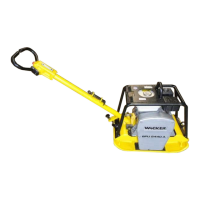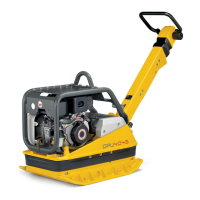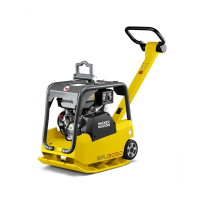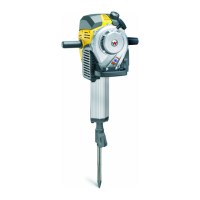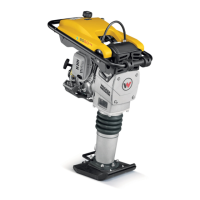BPU 2440/2950 Repair Repair Procedures
wc_tx000329gb.fm 31
5.2 Checking Exciter Operation
Before servicing the exciter, check for other possible problems that
could affect machine operation, such as: engine speed, control circuit
operation, drive belt tightness, and clutch performance.
If the engine is running underspeed, the exciter VPM will be reduced,
the plate will handle sluggishly and perform poorly, and travel speeds
will be greatly reduced. Check engine speed with a tachometer. See
Technical Data
for correct engine speed.
If engine cannot be brought up to speed, either the engine is at fault or
exciter bearings are binding. Check general condition of engine,
engine compression, and no-load operating speed.
5.2.1 To check bearings, run the machine with clutch engaged for several
minutes to warm exciter. Bearings may appear to turn freely when cold
but start to bind as they heat up. Stop engine and rotate the exciter by
hand.
Pinching hazard. Keep hands, feet, hair, and loose clothing away from
moving parts.
5.2.2 Remove belt guard cover and check operation of drive belt, clutch, and
exciter pulley. Use a vibration tachometer and check exciter VPM with
engine running at full throttle (3500–3600 rpm).
5.2.3 Air trapped in the control circuit will affect the plate’s ability to maintain
neutral position, or shift into forward. Make sure the system has been
properly bled, seals in handle are in good condition, and oil is at correct
level.
See Bleeding the Control Circuit.
5.2.4 If control system checks out but machine’s directional control still does
not operate correctly, the exciter’s actuating assembly is faulty or the
exciter timing is set incorrectly.
CAUTION

